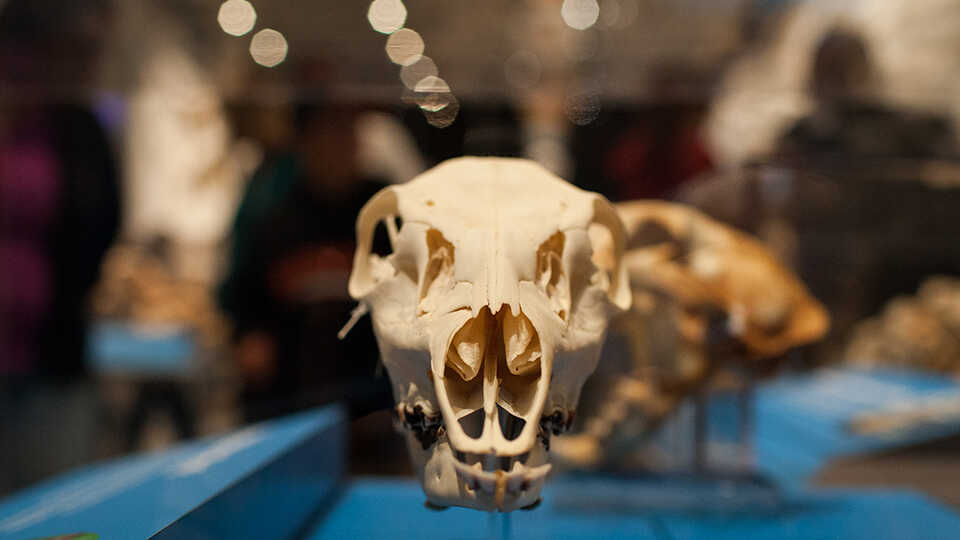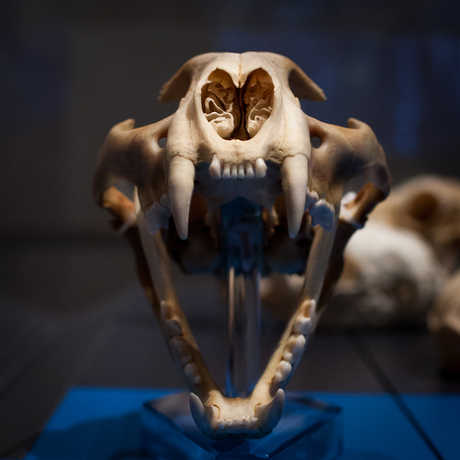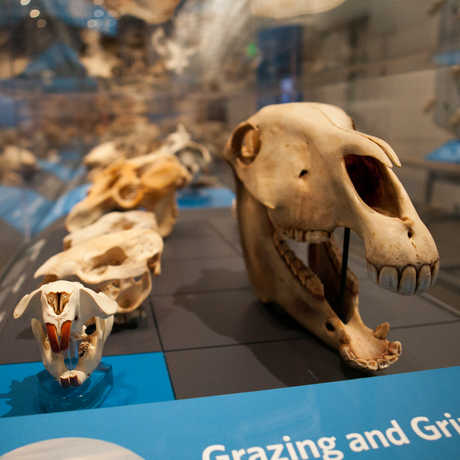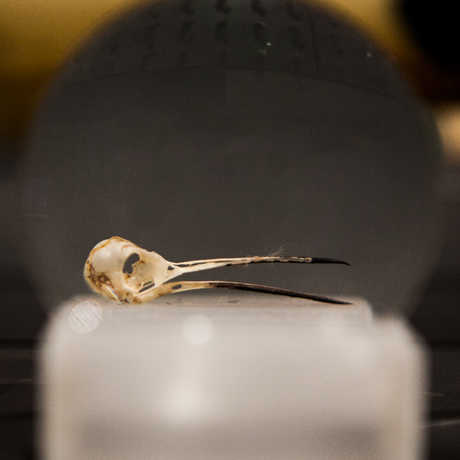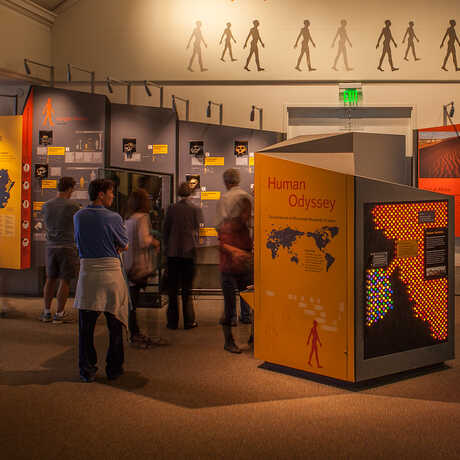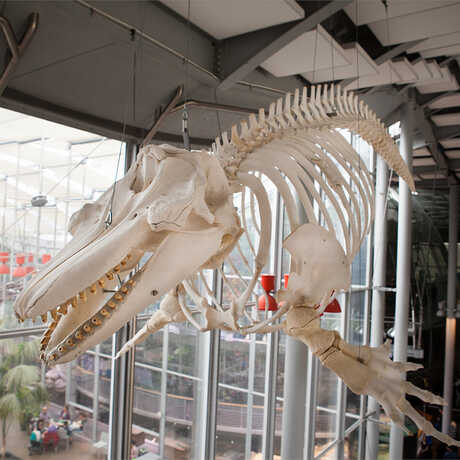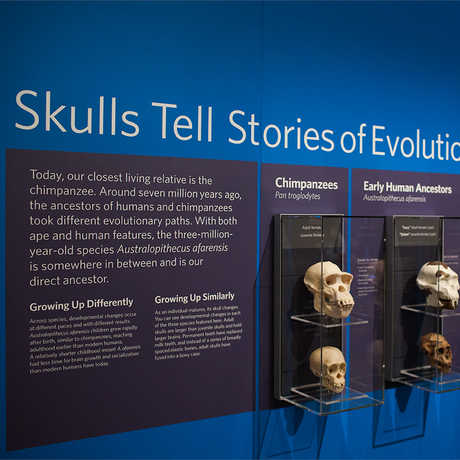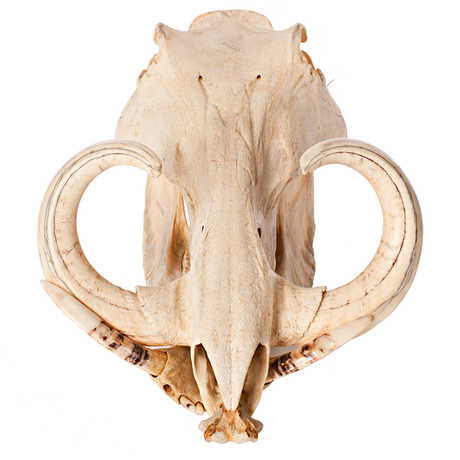Visit an aquarium, planetarium, rainforest, and natural history museum—all under one living roof.
Scientists have come to understand a great deal about the evolution of skulls by studying the fossil record. They know that prior to about 500 million years ago, no creature possessed a skull. Over time, skulls changed from a primitive collection of bony plates to the highly reinforced, structural marvels most vertebrates carry around today. Just as important as a skull’s age are its physical characteristics, which provide important clues about how the creature it came from is related to other animals. For example, analysis of the teeth of a tiny, long-nosed mammal from northern Namibia, known as the round-eared elephant shrew (Macroscelides micus), helped Academy scientists recognize it as a new species, distinct from a similar creature living nearby. Skull characteristics have also played a key role in illustrating the complex map of human evolution, most recently by confirming that we are more closely related to an extinct human-like species, Australopithecus afarensis, than to our closest living relatives, chimpanzees and other great apes.
